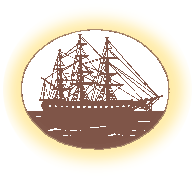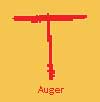
 |
 |

| Getting Started Key Words & Concepts Glossary Activities Recommended Resources Scuttlebutt | ||||
| Getting Started When Congress agreed in 1794 that America needed warships, someone had to design and build them. Ask students if they have ever created a costume or built a tree house or prepared a special dish of food. They probably followed three basic steps: created the idea or design, gathered the materials and put them together. |  | |||
Key Words and Concepts
The design for Constitution was well planned. Even before he was hired by the Secretary of War, ship builder and designer Joshua Humphreys had been thinking about the warships America might need. Britain's Royal Navy and other navies of Europe had thousands of vessels and hundreds of ships-of-the-line, floating fortresses with double and triple decks bristling with guns. America had to catch up, but it could not afford to build the largest vessels. Humphreys sought a ship that would be able to defeat the smaller vessels and escape the larger ones. He combined the best features of the larger and smaller vessels to create something new. He designed a ship that had a hull as strong as the large ships and was 20 feet longer and two to three feet wider than the medium-sized ships in her class. Her extra heavy construction meant she could carry 15 percent more guns than other frigates, but because she was smaller and sleeker, she could escape the biggest and most destructive ships.
Some of your students might have thought of building a boat or a raft. What were the basic challenges their designs had to address, such as floating, moving, turning and not tipping over? Write student suggestions on the board. Introduce vocabulary that describes a boat that is not tippy, or stable, and changes direction, or maneuvers, easily. Before engine power, how did ships move? Wind on the sails moved the vessel forward. Constitution was designed so that she maneuvered well, was stable and swift.
To build Constitution, the best materials were brought to Hartt’s shipyard in Boston, Massachusetts. Ask students to identify their ribs and backbone, and tell them Constitution has these parts too. But instead of bone, Constitution's ribs, or frames, are made of live oak and her backbone, or keel, of white oak. Her decks are yellow pine and her masts are made of the heartwood of white pine. Constitution has knees, too. These are oak crooks mostly used to brace the decks.
 Have students ever seen a house being built? Does the naked frame look complicated? Wooden war ships were the most complicated wood structures of their time. In a typical shipyard, 26 different trades were represented. For example, the shipwright specialized in making the hull. Mast-making was a separate skill. Everything was done by hand. Have your students ever watched someone use an electric drill? To build Constitution, artisans spent an entire week drilling one of the deep holes though her timbers by turning an auger.
Have students ever seen a house being built? Does the naked frame look complicated? Wooden war ships were the most complicated wood structures of their time. In a typical shipyard, 26 different trades were represented. For example, the shipwright specialized in making the hull. Mast-making was a separate skill. Everything was done by hand. Have your students ever watched someone use an electric drill? To build Constitution, artisans spent an entire week drilling one of the deep holes though her timbers by turning an auger.
What makes a ship different from a house? It lives in water. The importance of making a ship watertight is reflected in the status of the master caulker, who was near the top of the ship- building team. To keep the ship from leaking, caulkers drove strands of oakum into the seams between planks. Then, they covered the seams with hot melted pitch, or tar, to prevent the oakum from rotting.
 Ask the class how the shape of a house differs from the shape of a ship. The lines of a ship are curved. (The underwater form of the hull supposedly was inspired by the lines of a fish.) Constitution's hull cross section tapers inward above the water line. This hull shape has a nice name: tumble-home. But how were thecurves of a ship fashioned from wood? Three ways: timber was bent by boiling it in salt water to make it more pliable. It could also be shaped by an adze, a 9-inch, curved, razor-sharp blade mounted on a long wooden handle. The adze wasthe number one tool in the shipyard. By swinging it over the flat surface of a plank, the adzeman shaved off strips of wood to create curves. Lastly, tree branches, trunks and roots with the desired curving shapes were incorporated into the ship's design.
Ask the class how the shape of a house differs from the shape of a ship. The lines of a ship are curved. (The underwater form of the hull supposedly was inspired by the lines of a fish.) Constitution's hull cross section tapers inward above the water line. This hull shape has a nice name: tumble-home. But how were thecurves of a ship fashioned from wood? Three ways: timber was bent by boiling it in salt water to make it more pliable. It could also be shaped by an adze, a 9-inch, curved, razor-sharp blade mounted on a long wooden handle. The adze wasthe number one tool in the shipyard. By swinging it over the flat surface of a plank, the adzeman shaved off strips of wood to create curves. Lastly, tree branches, trunks and roots with the desired curving shapes were incorporated into the ship's design.
When Constitution's hull was complete, it had four decks: the top deck open to the weather called the spar deck; the next with gunports for the cannon called the gun deck; a third called the berth deck where, among other things, the crew slept; and, at the bottom, the orlop deck, used mostly for storage. From end to end, Constitution is 204 feet long and at the beam 43 1/2 feet wide. Her hull is 25 inches thick at the waterline. Her mainmast is 220 feet high.
Ask several groups of volunteers to measure the classroom as a basis for comparison to Constitution, or you might mark off her length and width in the school yard. Compare the height of the slide or jungle gym to the height of her mainmast. (Having several groups take the same measurements is a good way to illustrate that accuracy requires care.) You might ask students to research whether your town has a monument or church steeple similar in height to Constitution's mainmast.
Can students name the superintendent of their school district? The person to superintend, or oversee, construction of a ship was the captain appointed to command her. For Constitution, this was Captain Samuel Nicholson, her first commanding officer.
- ships-of-the-line: the largest of the wooden warships, having two or more covered gun decks and heavy armament
- live oak: hardwood tree used in the framework of ships for its rot resistance and strength
- mast: vertical pole supporting sails and rigging of a ship
- heartwood: inner core of a tree
- shipyard: construction site for ships
- trade: occupation requiring skilled labor
- shipwright: carpenter specializing in ship hull construction
- auger (AU-ger): a tool with a crosswise handle used for boring holes in wood
- caulker (KAU-ker) (master caulker): specialist in filling seams in a ship to prevent leakage and decay
- oakum: tarred fiber from old rope used for filling the seams of the decks and sides of wooden ships to make them watertight
- cross section: a section cut across an object
- waterline: line on a ship’s hull (framework or main body) to which it sinks when loaded
- mainmast: the tallest mast carrying the mainsail; middle mast on a frigate
| K-4
5-8
9-12
|
 |